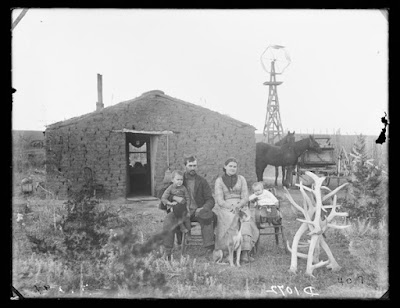 |
| With appreciation from the Keith County Historical Society, Ogallala, Nebraska. Donated by Mrs. William H. Copeland. |
It's the end of the year, and I have been busy as I try to organize all the photos and stories that I gathered this year from various archives around Nebraska. As many of you know, I am currently writing a book on the history of wildlife in Nebraska--with a focus on how people have changed landscapes and therefore affected the wildlife in our state. The book will be filled with stories and photos like the one above.
Culture also changes with time. The photo is from the Keith County Historical Society. The photo shows shows the Keith County Market, a butcher shop in Ogallala, NE at Christmas time in 1888. It was donated to the Historical Society by Mrs. William H. Copeland, the granddaughter of the butcher at the right in the photo. These personal records are key to understanding how important wildlife has been to the history of Nebraska, and how our landscape and culture have changed since these photos were taken. How many species of wild animals can you see in this photo?!
Did you run out and grab your Christmas Elk this year? Odds are, you did not. And, odds are that you did not eat elk all year. Most of us gobble up beef as a main source of protein, now; as we explored on this blog before, citizens of the US did not always enjoy beef. We relied much more on wild animals, and had a much more diverse diet!
So, Happy Holidays to one and all, and enjoy this photo as a window to days gone by, when elk were available in the vicinity of Ogallala (they are now about an hour south or a couple hours north) and when Christmas meant a trip to the butcher to get a measure of nature's bounty.
By the way: if you have stories or photos you would like to share with me, click here to find out how to contact me. I would love to hear stories or see photos from your family's collection!
























